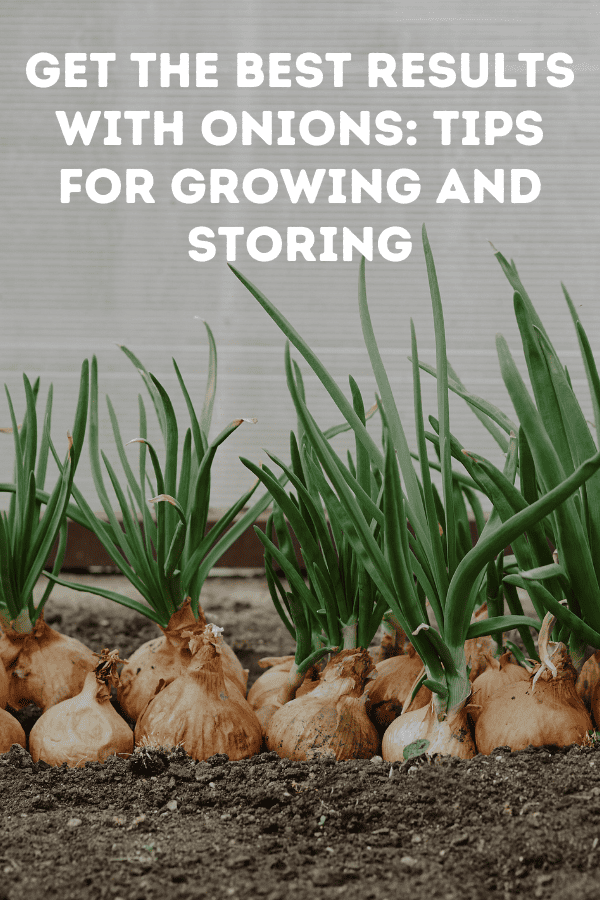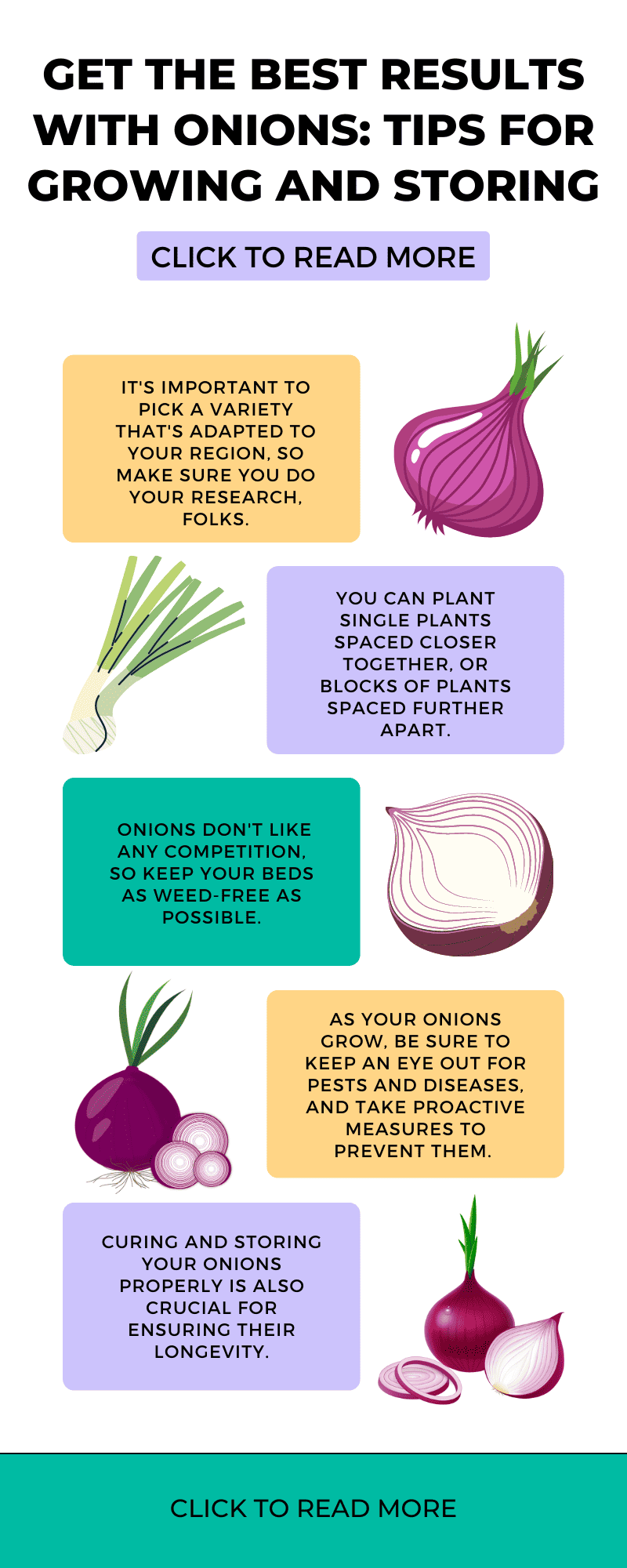
Today we're gonna talk about one of my favorite things to grow - onions! We're gonna break down all the juicy details, from varieties to spacing to curing and storage. So grab a cold one and let's get started, y'all!
Growing Onions Like a Pro: Essential Tips and Techniques
Now, when it comes to onions, there's a lot of different varieties out there, and what works best for you is gonna depend on your location and growing conditions. You got your long day, short day, and intermediate day onions, and they all require different amounts of sunlight to start forming bulbs. It's important to pick a variety that's adapted to your region, so make sure you do your research, folks.
When it comes to planting onions, you may have heard that you should trim the tops before transplanting for bigger bulbs. Well, let me tell you, that's a load of hogwash! Research shows that trimming the tops can actually reduce your yield and increase disease susceptibility, so don't waste your time with that nonsense.
As for spacing, there's a couple of different approaches you can take. You can plant single plants spaced closer together, or blocks of plants spaced further apart. We like to use the block method, with two to four plants per block and rows about seven to eight inches apart.
And remember, folks, keep those weeds out! Onions don't like any competition, so keep your beds as weed-free as possible. Now, onions are slow growers, so don't expect to harvest 'em right away. You'll know it's time to harvest when the greens start to brown and slump over.
When it comes to selecting the right variety, it's important to consider factors such as your climate, soil type, and day length. Long day onions, for example, require 14-16 hours of sunlight to form bulbs, and are typically grown in northern regions. Short day onions, on the other hand, need only 10-12 hours of sunlight and are suited to southern regions. Intermediate day onions fall somewhere in between and are often grown in the central regions of the US.
Once you've selected your variety, it's time to think about planting. Onions can be started from seed or from sets (small bulbs), and can be planted in the spring or fall depending on your region. It's important to give them plenty of room to grow, as onions need space for their bulbs to expand. As mentioned earlier, the block method can be effective for maximizing space while still giving your plants room to breathe.
As your onions grow, be sure to keep an eye out for pests and diseases, and take proactive measures to prevent them. Weeding regularly and providing adequate irrigation can go a long way in ensuring healthy growth. And when it's time to harvest, be sure to do so carefully to avoid damaging the bulbs.
Curing and storing your onions properly is also crucial for ensuring their longevity. After harvesting, lay your onions out in a warm, dry area with good ventilation for a few weeks to allow them to dry out and cure.
To extend the shelf life of onions, move them to cold storage (such as a root cellar or refrigerator) once they're fully cured.
When curing onions, a warm, dry area with good ventilation is essential. At our farm, we prefer to cure onions in a greenhouse or caterpillar tunnel for about two weeks before moving them to cold storage.
So there you have it, folks - a comprehensive breakdown of everything you need to know about growing onions. Don't forget to cure them properly and move them to cold storage to enjoy their flavor and nutrients for months to come.
Embed this infographic on your site.

